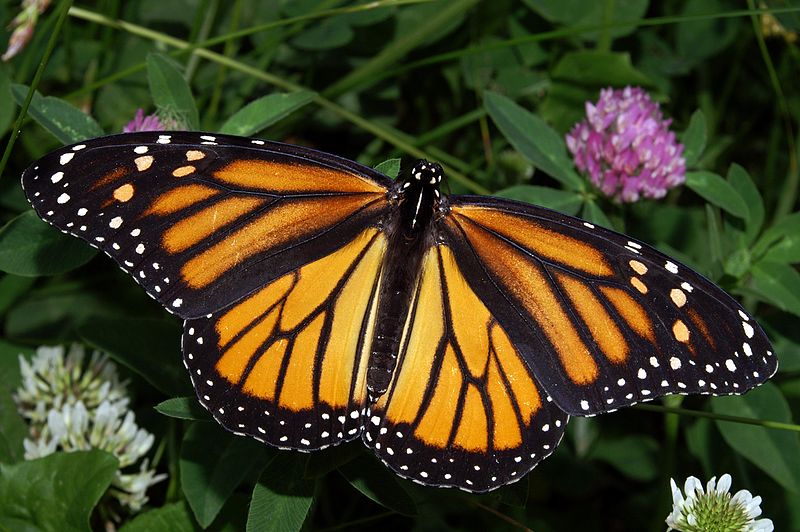We're open daily! View holiday hours
Science News
Cool Monarchs
March 19, 2013
by Molly Michelson

Each fall, monarch butterflies east of the Rockies make the long migration to their overwintering site in Mexico. Scientists have exposed the internal rhythms that tell the butterflies where to go, despite the fact that the site was last visited by their great-grandparents. But how do the butterflies know when it's time to leave Mexico and head north again?
Researchers at the University of Massachusetts suspected that temperature or daylight had something to do with it, so they collected wild monarchs at the start of their southward fall migration, brought them into the lab, and divided them into three groups. Two of the groups were exposed to the same cooler temperatures they would experience in their overwintering ground in Mexico. In addition, one of these two was also exposed to the same changing light levels they would experience south of the border. For the third group, the temperature remained warm and light levels never changed.
When placed into a flight simulator 24 days later, the first two groups of monarchs began flying northward. The third group, not exposed to cooler temperatures, continued flying southward.
If temperature alone determines when the butterflies start their northward migration, scientists raise concerns about the effects climate change will have on these beauties. "Without this thermal stimulus, the annual migration cycle would be broken, and we could lose one of the most intriguing biological phenomena in the world," says Steven Reppert. His study, coauthored with Patrick Guerra, appeared last month in Current Biology.
Sadly, on the heels of that study comes a report issued last week on the decline of monarch numbers in Mexico this past winter. The study blames drought in the American southwest and an increase in soy and corn farming. Both are responsible for a loss in the milkweed plants the butterflies rely on for food during their long migrations.
"If people want to help," says Craig Wilson of Texas A&M University, "they can pick up some milkweed plants right now at local farmer's cooperative stores and this would no doubt be a big boost to help in their migration journey. It is important to have a national priority of planting milkweed to assure there will be monarchs in the future. If we could get several states to collaborate, we might be able to provide a 'feeding' corridor right up to Canada for the monarchs."
Image: Kenneth Dwain Harrelson/Wikipedia